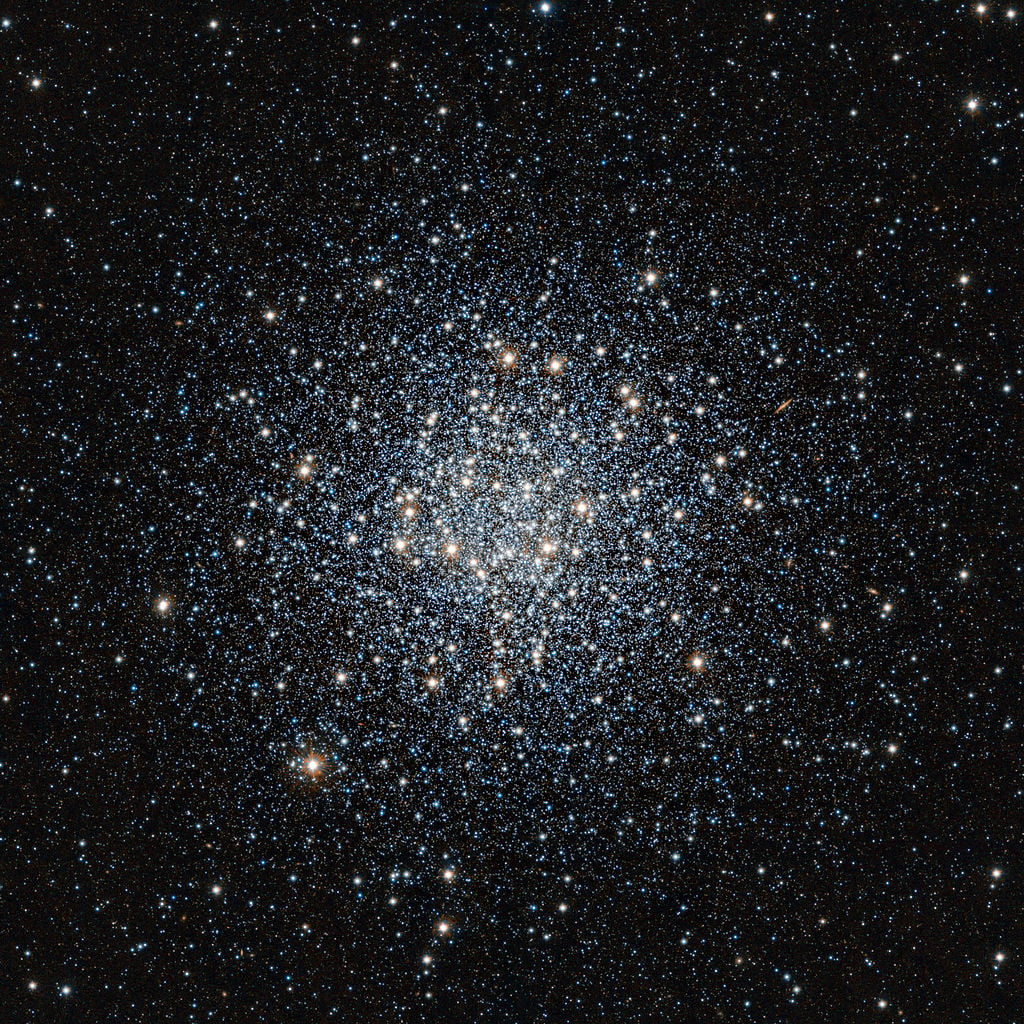Welcome back to Messier Monday! We continue our tribute to our dear friend, Tammy Plotner, by looking at the "Summer Rose Star", other known as the globular star cluster of Messier 55. Enjoy!
In the 18th century, while searching the night sky for comets, French astronomer Charles Messier kept noting the presence of fixed, diffuse objects in the night sky. In time, he would come to compile a list of approximately 100 of these objects, with the purpose of making sure that astronomers did not mistake them for comets. However, this list – known as the
Messier Catalog
– would go on to serve a more important function.
One of these objects is Messier 55, a globular star cluster located in the Sagittarius Constellation. Also known as the "Summer Rose Star", this cluster is located 17,600 light-years from Earth and spans about 100 light-years in diameter. While it can be seen with binocular, resolving its individual stars can only be done with a small telescope and finderscope.
Description:
Located some 17,300 light years from planet Earth and spanning nearly 100 light years in diameter, this loose appearing ball of stellar points may not seem concentrated - but its home to tens of thousands stars. Does anyone really take the time to count them? You bet. M.J. Irwin and V. Trimble did just that during their
1984 study
of Messier 55:
[caption id="attachment_136986" align="aligncenter" width="580"]
Globular cluster Messier 55 (M55, or NGC 6809) in the constellation Sagittarius, as imaged by the ESO 3.6-metre telescope on La Silla. Release date: 3 December 2009. Credit: ESO
[/caption]
But just want good does counting the stars do? Well, knowing how many stars are within a given area helps astronomers compute other things as well, like chemical abundances. Said Carlos Alvarez and Eric Sandquist in their
2004 study
:
Studying globular clusters photometrically also gives astronomers the advantage of comparing them to others, to see how each evolves. As P. Richter (et al) indicated in their
1999 study
:
And viewing globular clusters like Messier 55 in a different wavelength of light other than optical reveals even more stunning details - like the vision of the XMM-Newton. As N.A. Webb (et al) said in their
2006 study
:
History of Observation:
M55 was originally discovered by Abbe Lacaille on June 16th, 1752, when he was observing in South Africa. In his notes, he wrote: "It resembles an obscure nucleus of a big comet." Of course, our own comet hunter, Charles Messier, would search for a good many years before he recovered it to add to his own catalog.
By July 24th, 1778, he found the object and recorded it as follows in his notes:
[caption id="attachment_136988" align="aligncenter" width="580"]
Messier 55 in Sagittarius. Credit: Hewholooks/Wikipedia Commons
[/caption]
Johann Elert Bode, Dunlop and Caroline Herschel would follow, but it would be Sir William Herschel who would be first to glimpse the resolvability of this great globular cluster. In his private notes he writes:
Locating Messier 55:
M55 is by no means easy to find. One of the best ways to locate it is to begin at Theta 1 and Theta 2 Sagittarius, where you'll find it approximately two finger widths northwest of this pair approximately four degrees. Both Thetas are on the dim side for the unaided eye - about magnitude 4 and 5 respectively, but you'll recognize them when you find two stars separated by less than half a degree and oriented north/south.
For average binoculars, this will put M55 about a binocular field away to the northwest. For average image correct finderscopes, place the Thetas in the 8:00 position at the edge of the finderscope field and go to the eyepiece with the lowest possible magnification to locate it.
[caption id="attachment_136984" align="aligncenter" width="471"]
Messier 55 location. Credit: IAU and Sky & Telescope magazine (Roger Sinnott & Rick Fienberg)
[/caption]
Although it has a high visual brightness, M55 has low surface brightness so it isn't suitable to urban or light polluted skies. With dark sky conditions, binoculars will see it as a round hazy patch - like a diffuse comet, while small telescopes can begin to resolve individual stars. Larger aperture telescopes will pick out the fine grain of low magnitude stars quite easily!
Enjoy your own resolvability of this great globular cluster!
And as always, here are the quick facts on this Messier Object:
- Object Name
-
Messier 55
- Alternative Designations
-
M55, NGC 6809
- Object Type
-
Class XI Globular Cluster
- Constellation
-
Sagittarius
- Right Ascension
-
19 : 40.0 (h:m)
- Declination
-
-30 : 58 (deg:m)
- Distance
-
17.3 (kly)
- Visual Brightness
-
6.3 (mag)
- Apparent Dimension
-
19.0 (arc min)
We have written many interesting articles about Messier Objects here at Universe Today. Here's Tammy Plotner's
Introduction to the Messier Objects
,
M1 – The Crab Nebula
, and David Dickison's articles on the
2013
and
2014
Messier Marathons.
Be to sure to check out our complete
Messier Catalog
. And for more information, check out the
SEDS Messier Database
.
Sources:
- *Messier Objects - Messier 55: Summer Rose Star*
- SEDS - Messier 55
- Wikipedia - Messier 55
 Universe Today
Universe Today
